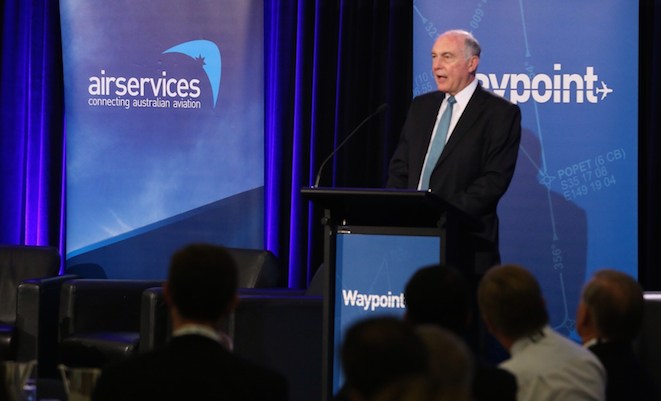
Acting Prime Minister Warren Truss has reaffirmed the government’s commitment to respond to the Forsyth inquiry into Australia’s aviation regulatory system before the end of the year.
Speaking at Airservices’ annual Waypoint conference in Canberra on Thursday, Truss said the Aviation Safety Regulation Review (ASRR) found Australia had a good safety record but identified “opportunities for improvement”.
“The government is now carefully considering all of the 37 recommendations and other matters arising from the report,” said Truss, who is also the Minister for Infrastructure and Regional Development.
“We intend to provide a comprehensive response before the year is out. Above all, we are committed to ensuring that aviation maintains an appropriate safety regulatory framework that will provide the platform for the industry’s future growth.”
The ASRR report, released in June, called for substantial cultural and structural change at the Civil Aviation Safety Authority (CASA) and for better leadership of and coordination between Australia’s aviation safety agencies. Moreover, it said the relationship between CASA and the aviation industry was “in many cases, adversarial”.
The review, also known as the Forsyth Report, said the appointment of a new director of aviation safety was a chance to reform the culture of the organisation.
Truss was speaking at a public event for the first time since John McCormick ended his five-and-a-half-year term as the director of aviation safety at CASA on August 31. But he did not address the matter of McCormick’s replacement or the three new directors due to be appointed to the CASA board.
CASA deputy director of aviation safety Terry Farquharson, who will be acting director of aviation safety until a permanent replacement is named, was in the audience at the Airservices conference.
Truss said the government was committed to reducing the regulatory burden on business by cutting unnecessary red tape and allowing more competition to facilitate job creation. Regulation was a particular feature of the aviation sector, he said.
“Aviation has more regulation per square inch than any other industry I know and I would like to get rid of most of them,” Truss said.
“But I know that that will compromise confidence in our safety record.”
However, there were some things that the government is able to do, such as lifting the regulatory burden on the nation’s airports.
“My department has been engaging with stakeholders to identify areas of regulation duplication and overlap affecting our airports,” Truss said.
“In particular we are consulting on proposals to streamline the master plan and major development plan processes. The airport owners tell me they would like to see a longer duration between master plans and that further productivity gains could be achieved if the financial thresholds around major development plans were amended.
“I think these objectives are achievable.”















